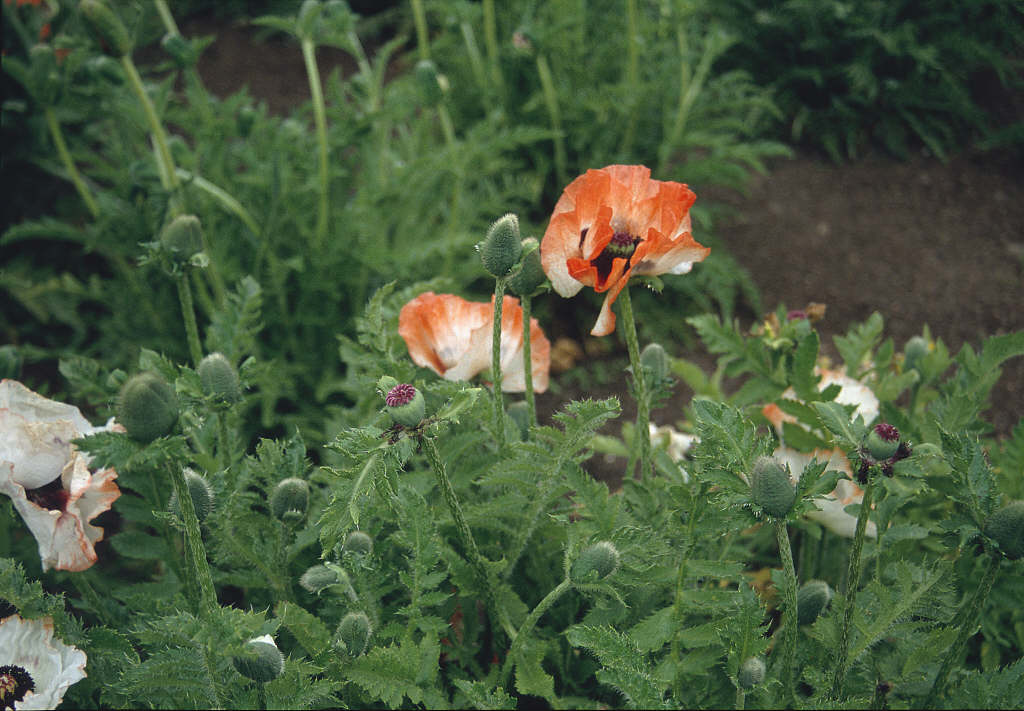Papaver (Oriental Group) 'Picotée'
oriental poppy 'Picotée'
'Picotée' is an herbaceous perennial to 80cm tall, with bowl-shaped white flowers in late spring and early summer, the petals rather variably edged with light pinkish-orange
Size
Ultimate height
0.5–1 metresTime to ultimate height
2–5 yearsUltimate spread
0.5–1 metresGrowing conditions
Moisture
Well–drainedpH
Acid, Alkaline, NeutralColour & scent
| Stem | Flower | Foliage | Fruit | |
| Spring | Orange White | Green | ||
|---|---|---|---|---|
| Summer | Orange White | Green | ||
| Autumn | ||||
| Winter |
Position
- Full sun
Aspect
South–facing or East–facing
Exposure
Sheltered Hardiness
H7Botanical details
- Family
- Papaveraceae
- Native to GB / Ireland
- No
- Foliage
- Deciduous
- Habit
- Bushy
- Genus
Papaver can be annuals, biennials or herbaceous perennials with simple or pinnately divided leaves and short-lived, saucer-shaped, 4-petalled flowers which may be solitary or in racemes
- Name status
Accepted
How to grow
Cultivation
Grow in deep, fertile, well-drained soil in full sun or partial shade. May need support
Propagation
Propagate by division in spring or propagate by root cuttings in late autumn to early winter
Suggested planting locations and garden types
- City and courtyard gardens
- Cottage and informal garden
- Flower borders and beds
Pruning
Cut down once flowers fade and foliage looks tatty
Pests
May be susceptible to aphids
Diseases
May be susceptible to downy mildews, powdery mildews, fungal wilts and verticillium wilt
Get involved
The Royal Horticultural Society is the UK’s leading gardening charity. We aim to enrich everyone’s life through plants, and make the UK a greener and more beautiful place.
